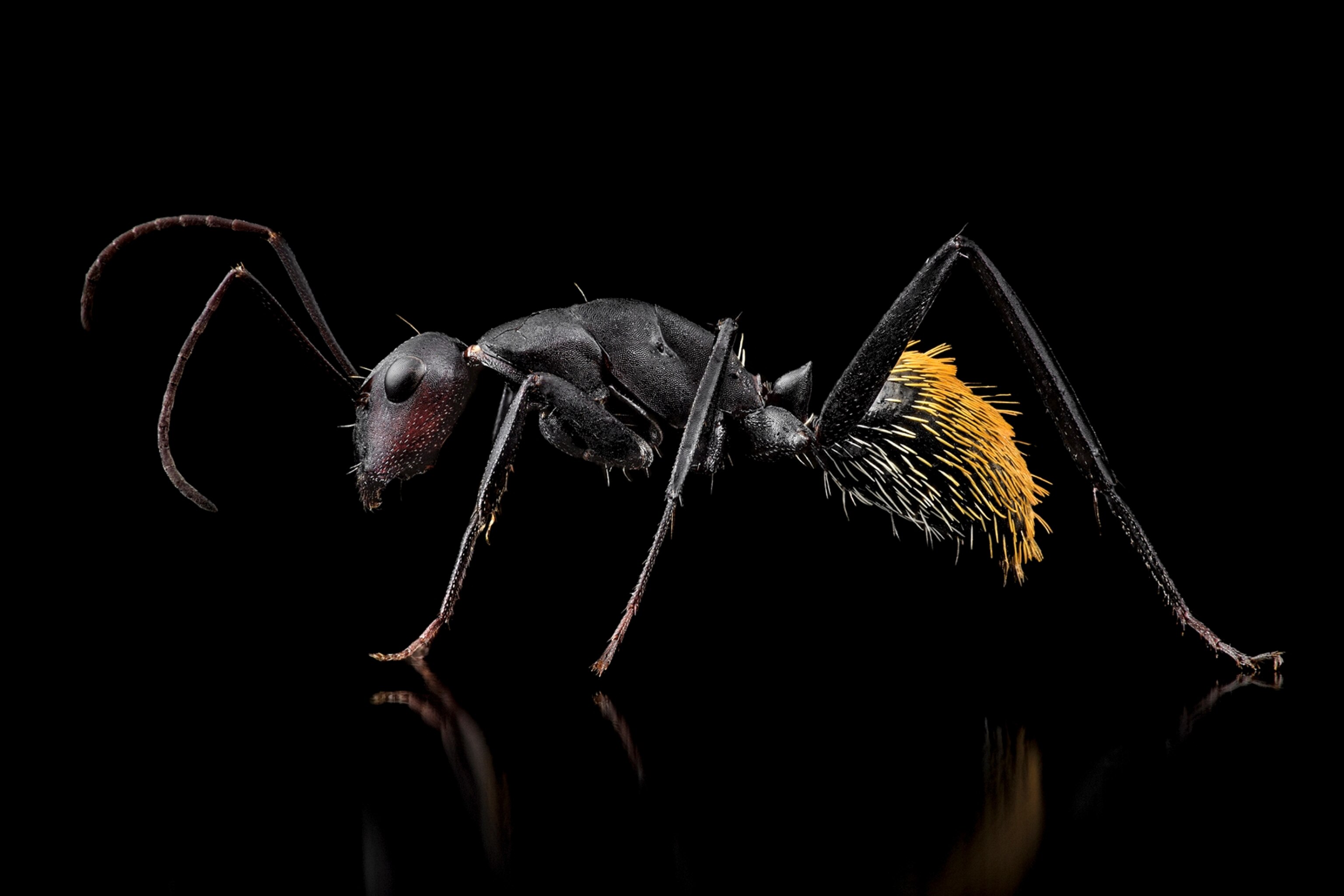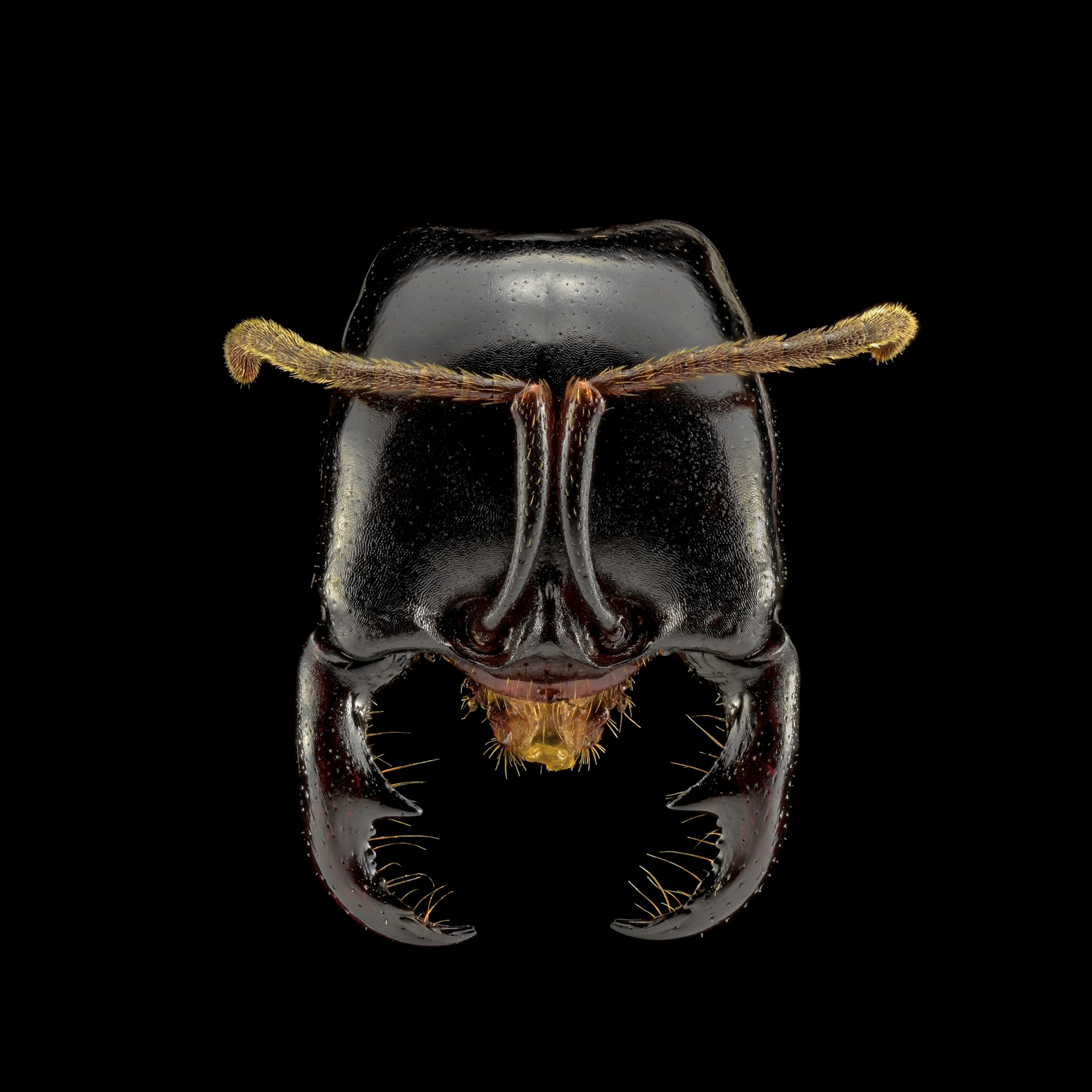
See the uncommon beauty of the common ant
With his extreme close-ups, a photographer hopes to foster greater appreciation for one of Earth’s most successful animals.
A toddler’s curiosity can be infectious. Walking to a park in their London neighborhood a few years ago, Eduard Florin Niga and his young daughter met an ant on the pavement. The girl stopped to examine it. “Where are the ant’s eyes, Dad?” she asked. Her father, a teacher—and a former police officer in his native Romania, where he documented crime scenes—knew photography would provide the answer.

Though ants are tiny, we can’t help but be aware of them. They are among the most ubiquitous and successful creatures on Earth.Eleanor Spicer Rice, Entomologist
Ants are one of Earth’s most abundant and successful animals. Fossils indicate they arose between 168 million and 140 million years ago. Today more than 15,000 species may exist. Some 12,000 of them have been described, and dozens have portraits in Niga’s debut book, Ants: Workers of the World.
Niga’s mode of macrophotography is painstaking, whether he’s magnifying a thing to 10 times its size or a thousand. He works alone at night in the back of his house, where vibrations from passing vehicles won’t disturb his setup. The room’s only illumination is the light he trains on his subjects. (Read about a photographer’s painstaking steps to get just the right image of fire ants.)



Collaborators send Niga specimens of ants and other insects, or he orders them online. Some arrive alive; they’re returned to the sender after the photo shoot or live out their days in colonies Niga keeps. Other specimens arrive preserved, often in ethanol. To ready a dead specimen for its close-up, Niga carefully rehydrates it, cleans it, pries open its jaws, and pins it in a lifelike position. (“It’s a little world,” he says, “so every little thing matters.”) He then takes hundreds of magnified images of the insect’s parts. To make the final portrait, Niga combines 150 to 500 of the images using a process called focus stacking, in which similar images with different focal points are blended to achieve a more profound depth of field. Completing one of these portraits can require a week or longer.

Portraits of ants, in parts






Combining images doesn’t work with live models—movement can make an ant look, for example, as if it has several heads—so capturing a satisfactory photo of a live insect can take Niga a couple of days. He says he isn’t a patient person in most situations, “but with this, I don’t know where the patience comes from. It’s probably because I absolutely love it.” Niga hopes his images foster a greater appreciation of the world’s tiny creatures—eyes and all.

This story appears in the April 2023 issue of National Geographic magazine.
Related Topics
You May Also Like
Go Further
Animals
- Behind the scenes at America’s biggest birding festivalBehind the scenes at America’s biggest birding festival
- How scientists are piecing together a sperm whale ‘alphabet’How scientists are piecing together a sperm whale ‘alphabet’
- Orangutan seen using plants to heal wound for first timeOrangutan seen using plants to heal wound for first time
- What La Palma's 'lava tubes' tell us about life on other planetsWhat La Palma's 'lava tubes' tell us about life on other planets
Environment
- The northernmost flower living at the top of the worldThe northernmost flower living at the top of the world
- This beautiful floating flower is wreaking havoc on NigeriaThis beautiful floating flower is wreaking havoc on Nigeria
- What the Aral Sea might teach us about life after disasterWhat the Aral Sea might teach us about life after disaster
- What La Palma's 'lava tubes' tell us about life on other planetsWhat La Palma's 'lava tubes' tell us about life on other planets
- How fungi form ‘fairy rings’ and inspire superstitionsHow fungi form ‘fairy rings’ and inspire superstitions
History & Culture
- This thriving society vanished into thin air. What happened?This thriving society vanished into thin air. What happened?
- These were the real rules of courtship in the ‘Bridgerton’ eraThese were the real rules of courtship in the ‘Bridgerton’ era
Science
- Is the 5-second rule true? Science finally has an answer.
- Science
- Gory Details
Is the 5-second rule true? Science finally has an answer. - E-bikes are good for the environment—but what about your health?E-bikes are good for the environment—but what about your health?
- Why trigger points cause so much pain—and how you can relieve itWhy trigger points cause so much pain—and how you can relieve it
Travel
- The best LGBTQ-friendly destinations for every travelerThe best LGBTQ-friendly destinations for every traveler
- 6 of the best active pursuits on Cape Cod and the Islands
- Paid Content
6 of the best active pursuits on Cape Cod and the Islands - The key to better mindfulness may be your public gardenThe key to better mindfulness may be your public garden




